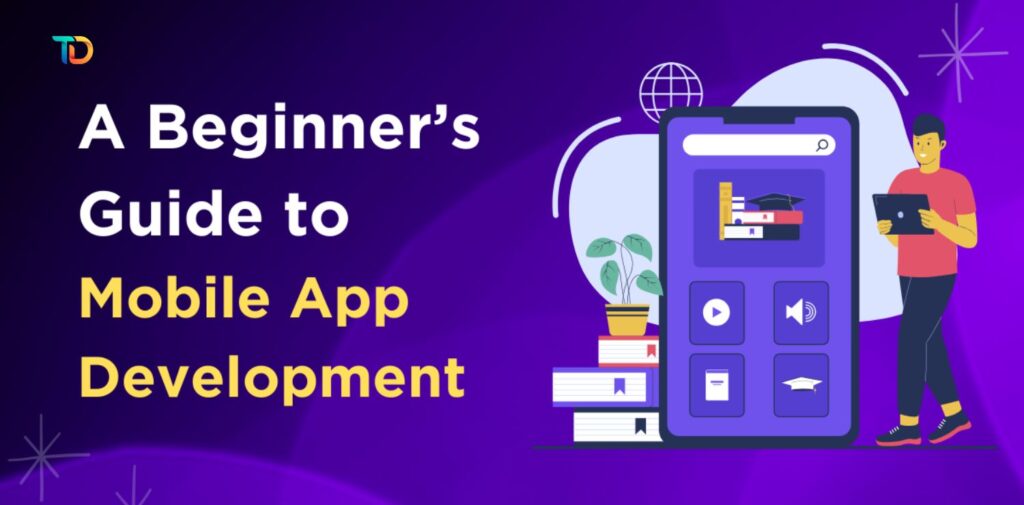Mobile app development is one of the most exciting and fast-growing fields in technology today. With millions of smartphone users worldwide, creating a mobile app is an excellent way to reach a large audience and make an impact. Whether you are looking to build an app for fun, to solve a problem, or for business, understanding the basics of mobile app development is essential. This guide is designed to help beginners get started in a simple and easy-to-understand way.

What is Mobile App Development?
Mobile app development is the process of creating software applications that run on mobile devices like smartphones and tablets. These apps can be built for different platforms, mainly Android and iOS. Android apps are created for devices like Samsung, Xiaomi, and OnePlus, while iOS apps are made for Apple devices like iPhones and iPads.
Types of Mobile Apps
There are three main types of mobile apps you can develop:
- Native Apps: These apps are developed for a specific operating system (Android or iOS). They are fast and offer the best performance but require separate development for each platform.
- Web Apps: These are websites that look and feel like apps but are accessed through the browser. They are easier to develop and maintain but don’t offer the same performance as native apps.
- Hybrid Apps: These apps are a mix of native and web apps. They are developed using web technologies but can be installed on devices like native apps. Hybrid apps are often easier to build and maintain.
Key Steps in Mobile App Development
- Plan Your App
Before you start coding, it’s important to have a clear plan. Think about what you want your app to do. Is it a game, a shopping app, a fitness tracker, or something else? Define your app’s purpose, target audience, and features. Sketch out the design and create a simple roadmap to guide your development process.
- Choose the Right Platform
Decide whether you want to build your app for Android, iOS, or both. Android apps are typically built using Java or Kotlin, while iOS apps are developed using Swift or Objective-C. If you want to reach a larger audience, you may consider developing your app for both platforms.
- Learn the Necessary Programming Languages
If you’re new to mobile app development, learning the right programming languages is crucial. Here are the main languages used:
- Java/Kotlin: For Android apps.
- Swift/Objective-C: For iOS apps.
- HTML/CSS/JavaScript: For web and hybrid apps.
There are many online courses and tutorials available in India and globally to help you learn these languages. Start with the basics and gradually build your skills.
To develop an app, you will need the right tools. These are software that helps you write, test, and debug your app. Some popular development tools are:
- Android Studio: For Android apps.
- Xcode: For iOS apps.
- React Native: For building hybrid apps that work on both platforms.
These tools often come with emulators to test your app before releasing it to users.
- Design and User Experience (UX)
A key part of any successful app is its design. The app should be easy to use and visually appealing. Focus on simple navigation, a clean interface, and ensuring that users can complete tasks easily. In India, many users prefer apps with a user-friendly design and support in regional languages.
- Testing Your App
Testing is an essential step in app development. It helps you identify and fix bugs before your app is available to users. You can test your app on different devices and screen sizes to make sure it works well on all types of smartphones. Beta testing, where you invite users to test the app, is also a great way to get feedback.

- Launch Your App
Once you’re happy with your app, it’s time to launch it. Submit it to app stores like Google Play for Android and the Apple App Store for iOS. Both platforms have guidelines and requirements that your app must meet before being approved. You will also need to create a description, screenshots, and other materials to promote your app.
- Maintain and Update Your App
After launching your app, it’s important to keep it updated. This includes fixing bugs, improving performance, and adding new features based on user feedback. Regular updates will keep users engaged and improve the chances of your app’s success.
Conclusion
Mobile app development might seem overwhelming at first, but by following these basic steps, you can start creating your own app. Remember, practice is key. Keep learning, experimenting, and building. In India, the demand for mobile apps is growing, and with the right knowledge, you can create something useful, innovative, and successful.
